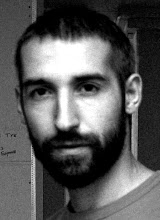














A Project by Venelin Shurelov, SubHuman Theatre
The sumptuous entertainment arranged to amuse the European elite in the 16th, 17th and 18th century have transformed, by employing the practices of anatomical theatre and the fantastic, precious and uncommon objects arranged like encyclopedic collections, the “cosmos” from a static plate for contemplation only into an occasion for dramatic research. Cabinets of curiosity(Kunstkammern, Wunderkabinet) of all sorts displaying minerals, engraved jewelry, insects in amber, butterflies, mummified ears of Egyptian bulls, Babylon bricks, antiquities, medals, coins, timepieces, astrolabes, compasses, prisms, mirrors, microscopes, telescopes, magical kaleidoscopes, camera obscruras, wax figures, intelligent machines, miraculous playthings and automata, made up what Samuel Quiccheberg defined, in his Inscriptiones vel Tituli Theatri(1565), as a theatre of the universe... In this universal theater, the visitors admire a variety of scenes not in dark auditoria but on the stage itself. The universal collection urges its consumers to become performers possessing the means of a better understanding of the world. From mere witnesses they become participants in the cultural migration across the borders of the visible and the invisible, the real and the imaginary, the natural and the artificial, the biological and the synthetic, the born and the made, the human and the inhuman. This “migration” unfolds the greatest fear of man, to become aware of his/her own fragmentation, disintegration, decomposition and death and, at the same time, his/her greatest desire: „All dreams return again and again to the only drive that has remained: to run away from the outlines of one’s own self” (Hans Belmer).
Tabula rasa (Latin, blank tablet or slate) is a work of art made up of an object-box-table divided into many sectors with the author’s body lying underneath them. There is a marker in each sector and the visitors may use it to draw, scribble, write on the separate parts of the body. Thus, each movement of the spectator/participant is a kind of dissection, objectification, categorization, description and research that directly affects the author, both physically and emotionally. The “vitality” of his body that responds, hurts, laughs, poses the question of the direct effect of the study of the “otherness” and of how its objectification can be seen as a form of violence.
The second phase of the project is to take photos of visitors’ pictographic intervention, to print them in the respective size and number of copies and to replace the live body by the artifact thus made. The print-out images transform the “reminder” of the body into a collection or into an abstract fragment.
The association with the image of the helpless, nude and cold body placed on the dissecting table, into the operation room of some of the renowned anatomists of the age of Enlightenment is related to their research of the “other” that is, not to a smaller degree, a kind of spectacle, a uncommon form of initiation, a consecration, unveiling, a ritual for the elect, who are well-defined but also competent enough to enter the imaginary and who are at the same time ready to create a basic pattern of human body related to the stereotypes of different ages. The Tabula RasaProject aims at the stereotypes of our times when many secrets of the body have been disclosed and thus it becomes increasingly emptier and artificial, a body reduced to a systematized, generalized, controlled, universalized, exteriorized, tailored, reshaped, stuffed, prosthesized, objectified thing. The issue to which I would like to draw the attention of the audience, apart from the fact that the Enlightenment scientists were the first to see the body as dissected, as a source of information, as a specimen, is that these processes actually reveal a colonial aspiration that is a practice of domination, a privilege in production of objective truths that is similar to various form of social engineering: anthropology, eugenics, euthanasia, sterilization, segregation, genocide, biotechnology, birth- and death-control.
The similarity between ourselves and the scientists from the age of the Enlightenment lies in the fact that we both face the fascination of the dread and the universal allegorical nature of anatomic images that have been extended and replaced in our times by a world without secrets, a world of naked flesh and its fragile potency broken up by the commercial, media and popular pressure. We face a weak body resembling the lost battles with Nature, evolution and policies, a body that is dependent and brittle, a body that is even unable to retain its intimacy and identity. The modern man from the late 19th century up to the present has been successfully overcoming the fantastic moral classifications of the 18th century but only to replace them with an epidermal sack, a creature of duplicates and clones and a genetic identification turned upside down. The new human design has given birth to the man-object, the man-table, the man-hybrid, the Monster, the Other.
Venelin Shurelov, 10th October 2008
